
Restoring the Sundarbans ecosystem
Proper implementation of mitigation measures and monitoring is needed to restore the mangroves and the rich biodiversity of the Sundarbans ecosystem that has been suffering due to multiple challenges.

Proper implementation of mitigation measures and monitoring is needed to restore the mangroves and the rich biodiversity of the Sundarbans ecosystem that has been suffering due to multiple challenges.
It literally means ‘beautiful forest,’ but the Sundarbans region is now struggling to thrive in the face of various threats and challenges. The mangroves, which are rich in biodiversity, have been facing various natural and man-made challenges.
A UNESCO World Heritage Site and Ramsar site, the forest area is getting affected by climate change, anthropogenic activities, extension of non-forestry land use into mangrove forest, and unscientific urbanisation, resulting in a gradual decrease in the green mangrove cover.
The Sundarbans is a delta formed by the Ganga, Brahmaputra and Meghna rivers before the Bay of Bengal. It was recognised as a reserve forest in 1875 under the Indian Forest Act of 1865 (Act VIII of 1865).
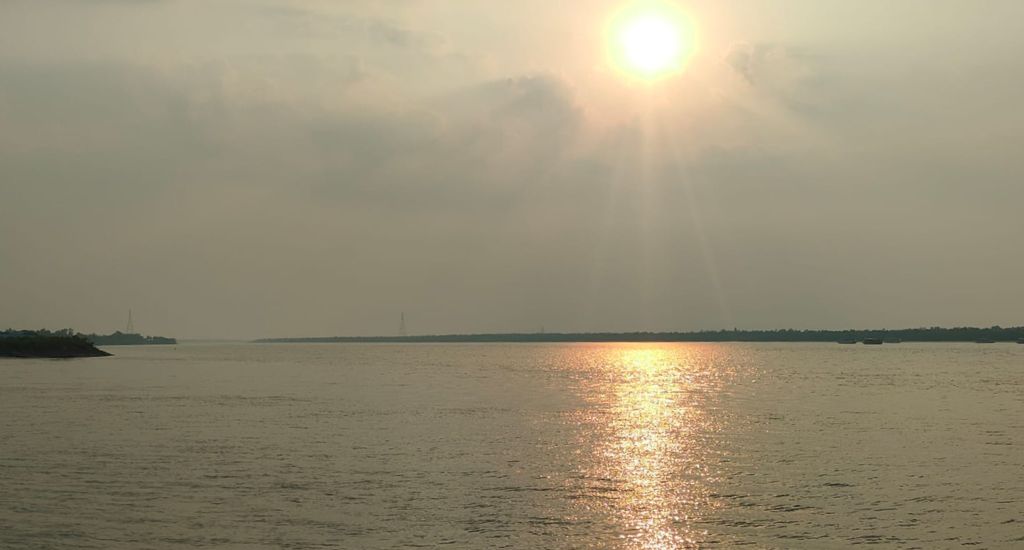
The mangrove forest area covers 10,200 sq km, of which 4,200 sq km of reserved forest lies in India while the rest is in Bangladesh.
Several archaeological studies have shown the presence of human habitation in the Sundarbans as early as 150,000 BC. Though Sundarbans’ existence dates back two million years as per study reports, the coastal region of the delta is not older than 5,000 years.
Also Read: Organic farming gathers steam in the Sundarbans
The Sundarbans were mentioned by Chinese traveller-scholar Hiuen-Tsang. Old Indian epics such as the Ramayana, Mahabharata and the Puranas also narrate the journey of the people of Sundarbans, with the ‘Gangasagar’ mentioned in the Mahabharata believed to denote this region. Some say that the Sundarbans is named after sundari, a variety of mangrove, which grows here.
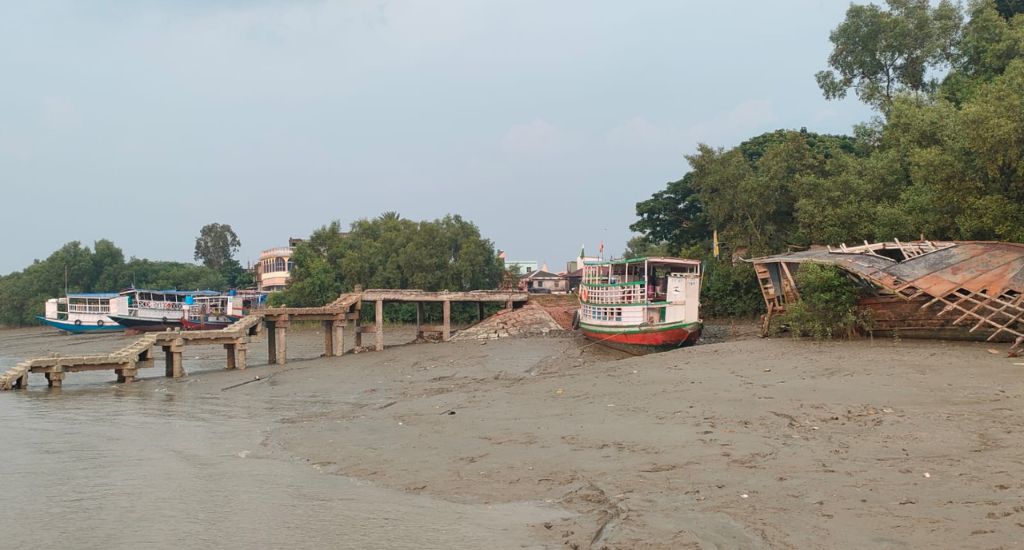
The indigenous tribes who lived in the area in the early 13th century took to fishing over time to sustain their livelihood. Sundarbans not only has strong historical and cultural values, but it’s also identified as a critically vulnerable coastal area. It is the world’s largest mangrove forest which has 400 inter-connected networks. Fifteen rivers flow inside the forest.
The mangrove forest is a safe home for 84 species of flora, including 26 mangrove species, and 453 species of fauna, including 120 species of fish, 290 species of birds, 42 species of mammals, 35 reptiles and eight amphibian species.
More than 12 million people – 4.5 million in India and 7.5 million in Bangladesh – live in this estuarine ecosystem. Their occupations are agriculture, small-scale business, tourism, fishing, honey collection, etc.
Also Read: Women-centric interventions needed for flood-ravaged Sundarbans islands
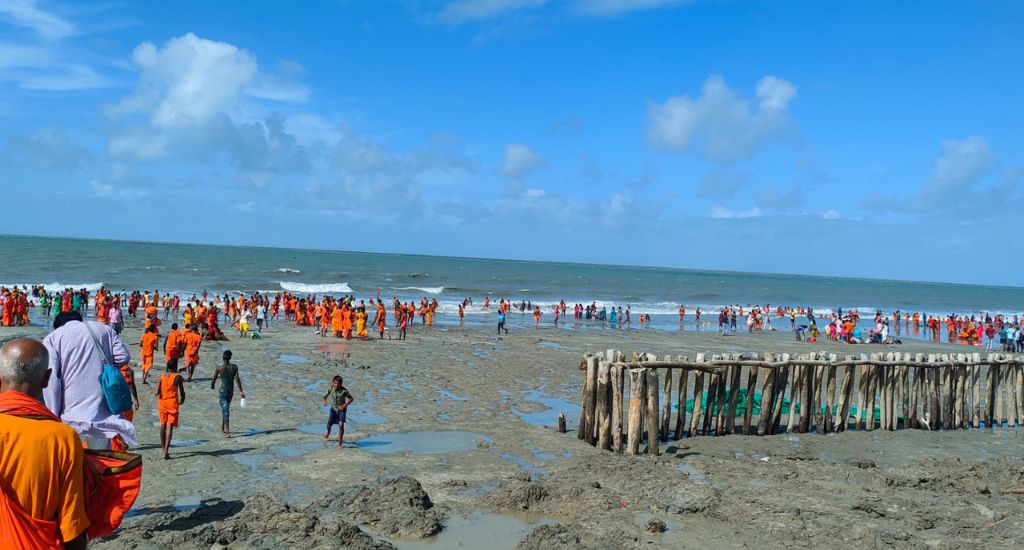
The home of the Royal Bengal tiger spreads across 102 islands, of which 54 are inhabited while the rest are covered by dense forests.
The people of Sundarbans have learned to sustain their livelihoods despite constant threats from wildlife and natural disasters. Cyclone Amphan brought in its wake 56 tonnes of plastic when it hit the region in 2020. As per an environmental study report, four million tonnes of microplastics are discharged annually by the rivers of India and Bangladesh into the Sundarbans and the Bay of Bengal.
The fresh water flowing into the mangrove system has reduced. Increase in salinity, environmental pollution, socio-political disturbance, changes in biodiversity and sea level, changing characteristics of local rivers and creeks, and river erosion have made the situation difficult for the forest dwellers.
Also Read: Amphan deals a severe blow to struggling Sundarbans villagers
Excessive utilisation of forest resources, man-animal conflicts, excessive human activities such as fishing and tourism, poaching of wild animals, unemployment and Infrastructure issues are major influencing factors.
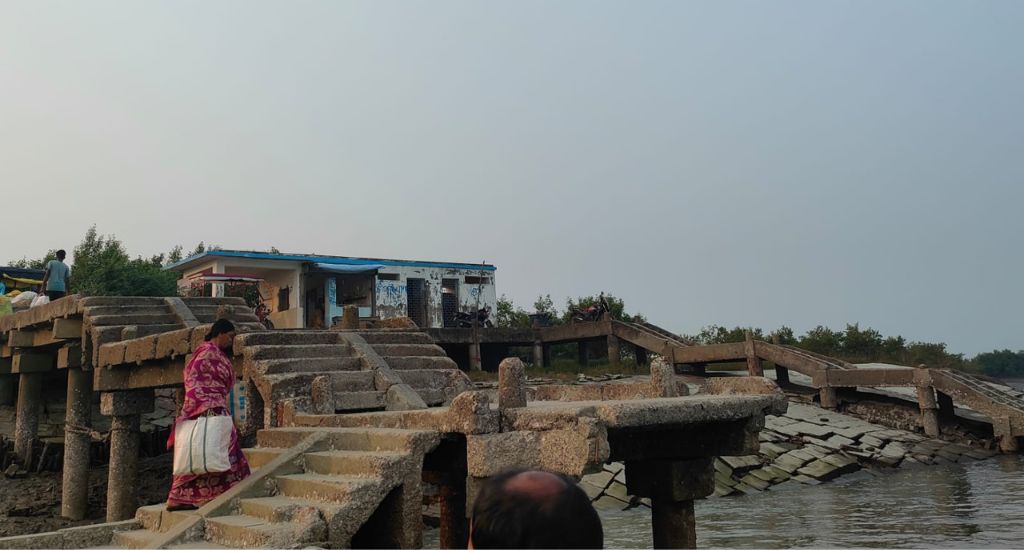
Further exacerbating the situation is the unchecked chemical pollution through marine paints and hydrocarbons from the Mongla Port in Bangladesh and the leather industry in India.
Mangroves play a crucial role in supporting the estuarine ecosystem and its people. Sundarbans, which acts as a green shelter for natural disasters, absorbs 4.15 crore tonnes of carbon dioxide – valued at around US$ 79 billion in the international market – and it has its own mechanism to support the ecosystem, as per a study by the University of Calcutta’s marine science department.
In order to tackle the adversities, a joint forest management committee and eco-development committee have been working to support the ecosystem. One of the key ways towards this is to prevent the local people from harvesting forest resources (non-timber and timber resources) unscientifically and excessively, so that people and the environment can be saved from the impacts of climate change.
Also Read: Why are most women in Sundarbans anaemic?
Experts are looking for nature-based solutions to restore the ecosystem. Various non-governmental organisations and government bodies are trying to mitigate the challenges, but lack of improper implementation continues to post hurdles.
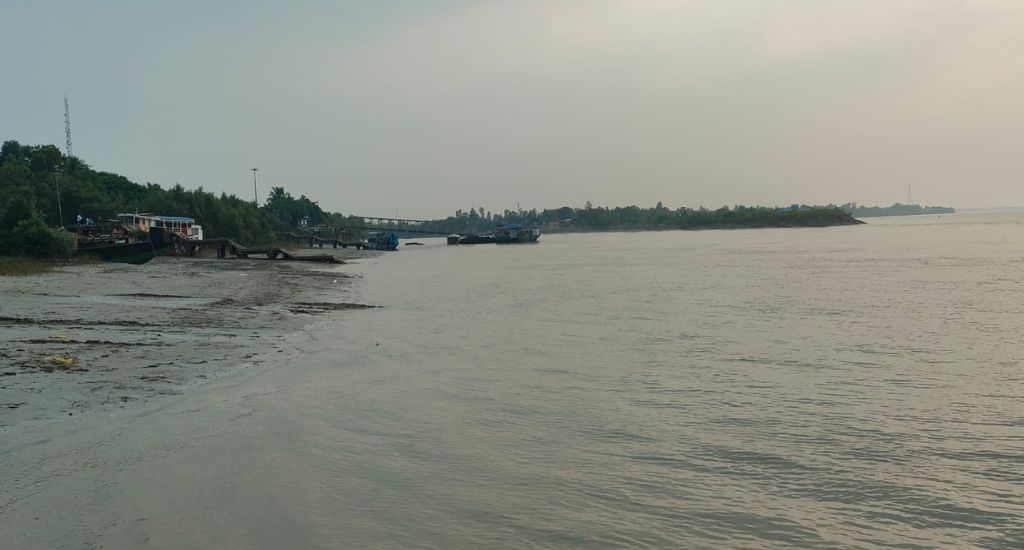
Immediate steps such as restoring the quality of air, water and soil, creating alternative livelihoods for the local people, and policies to stop plastic pollution need to be implemented. The mitigation measures undertaken by NGOs and other stakeholders also need to be properly monitored.
The lead image at the top shows people in a boat in the Sundarbans, on which they depend for their livelihood. (Photo by Rangeet Mitra)
Rangeet Mitra is a development professional who works with several central and state government departments as well as non-governmental organisations. He is a chemical engineer with an MBA in public systems (environment).